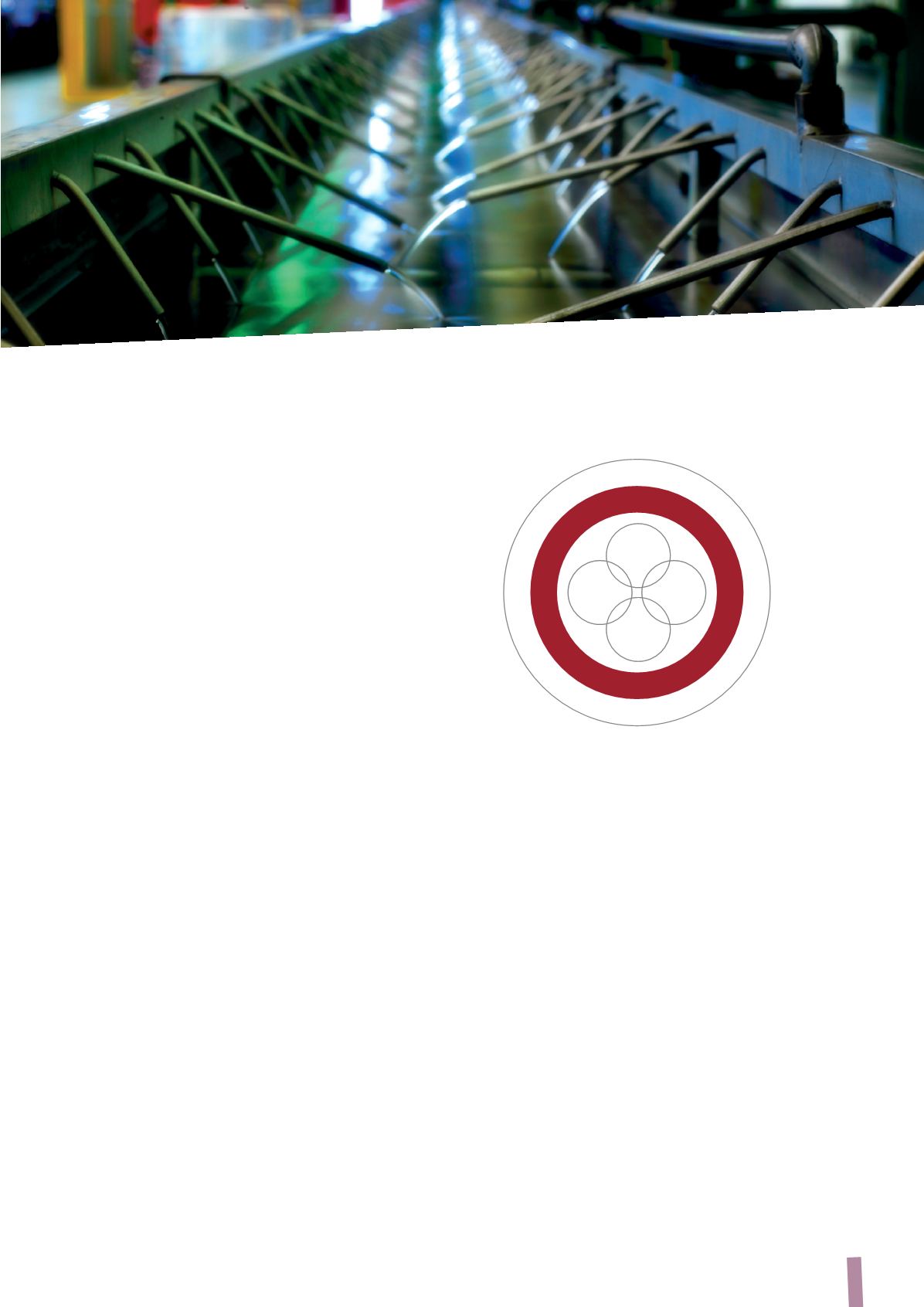
97
CONTENXT RISKS
Exchange rate risk
The Prysmian Group operates internationally and is therefore
exposed to exchange rate risk in the various currencies in
which it operates (principally the US dollar, British pound,
Brazilian real and Qatari riyal). Exchange rate risk occurs when
future transactions or assets and liabilities recognised in the
statement of financial position are denominated in a currency
other than the functional currency of the company which
undertakes the transaction.
To manage exchange rate risk arising from future trade
transactions and from the recognition of foreign currency
assets and liabilities, most Prysmian Group companies use
forward contracts arranged by Group Treasury, which manages
the various positions in each currency.
However, since Prysmian prepares its consolidated financial
statements in Euro, fluctuations in the exchange rates used
to translate the financial statements of subsidiaries, originally
expressed in a foreign currency, could affect the Group’s
results of operations and statement of financial position.
A more detailed analysis of the risk in question can be found in
the “Financial Risk Management” section of the Explanatory
Notes to the Consolidated Financial Statements.
Interest rate risk
Changes in interest rates affect the market value of the
Prysmian Group’s financial assets and liabilities as well as its
net finance costs. The interest rate risk to which the Group is
exposed is mainly on long-term financial liabilities, carrying
both fixed and variable rates.
Fixed rate debt exposes the Group to a fair value risk. The
Group does not operate any particular hedging policies
in relation to the risk arising from such contracts since it
considers this risk to be immaterial. Variable rate debt
exposes the Group to a rate volatility risk (cash flow risk).
The Group uses interest rate swaps (IRS) to hedge this risk,
which transform variable rates into fixed ones, thus reducing
the rate volatility risk. Under such IRS contracts, the Group
agrees with the other parties to swap on specific dates the
difference between the contracted fixed rates and the variable
rate calculated on the loan’s notional value. A potential rise in
interest rates, from the record lows reached in recent years, is
a risk factor in coming quarters.
In order to limit this risk, during 2012 the Prysmian Group
took out additional IRS contracts to mitigate the risk of a
rise in interest rates until the end of 2016. A more detailed
analysis of the risk in question can be found in the “Financial
Risk Management” section of the Explanatory Notes to the
Consolidated Financial Statements.
Risks associated with fluctuations in raw material prices
The principal material used for making the Prysmian
Group’s products is copper. The other raw materials used
are aluminium, lead and steel, as well as various petroleum
derivatives, such as PVC and polyethylene.
All raw materials have experienced particularly significant
price fluctuations in recent years, which could continue
in coming quarters. The Group neutralises the impact of
possible rises in the price of copper and its other principal
raw materials through automatic sales price adjustment
mechanisms or through hedging activities; the exception is
petroleum derivatives (polyethylene, plastifying PVC, rubber
and other chemical products), where the risk cannot be offset


